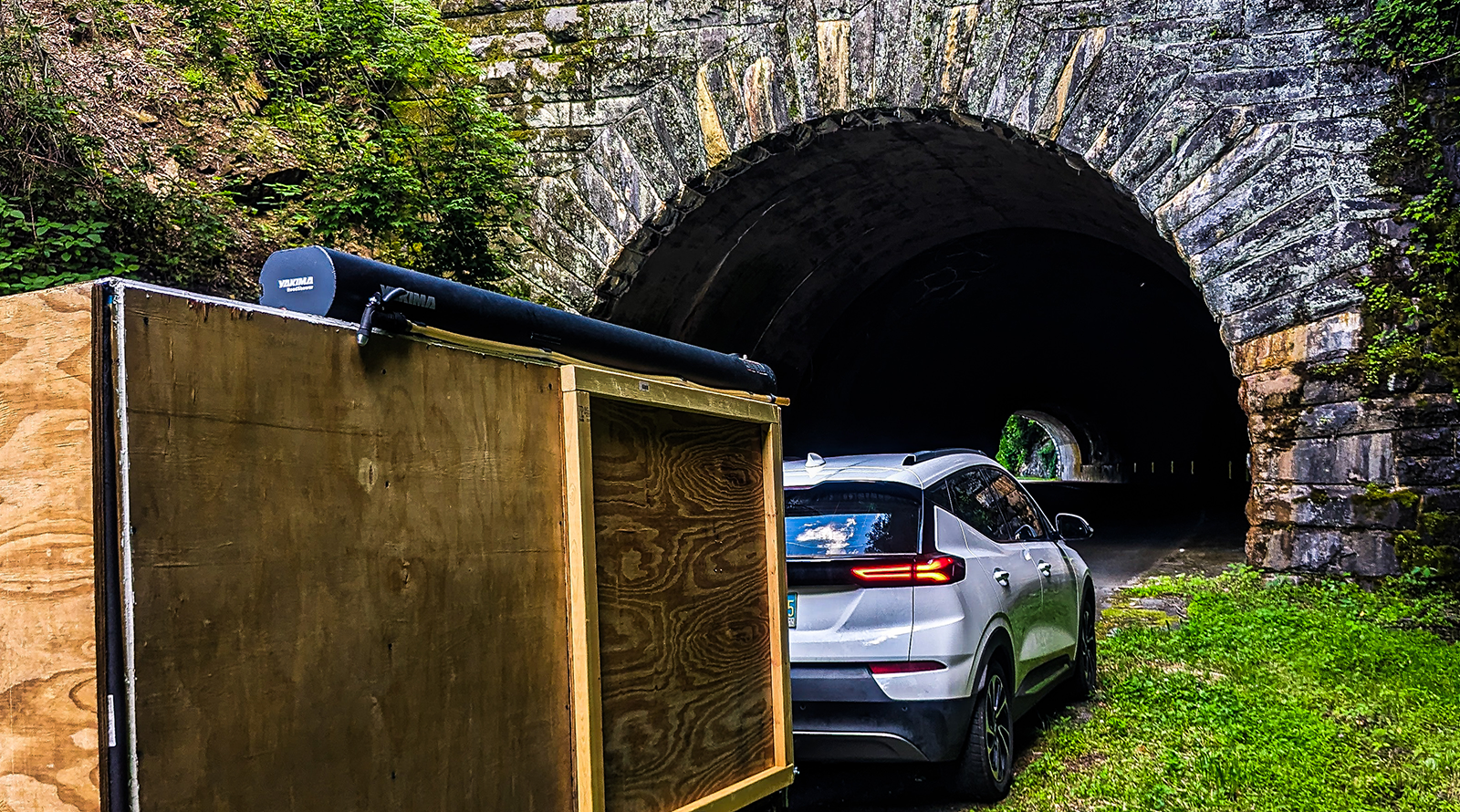Sign up for daily news updates from CleanTechnica on email. Or follow us on Google News!
Back in 2019, I took a ridiculous trip in Arizona and New Mexico. I was both in a vehicle ill-suited to road trips and driving on roads without good charging opportunities. In this article, I want to take a second look at that trip considering all that I’ve learned since then, and then take a look at how much things have changed in the last five and a half years.
1200 Miles In A Nissan LEAF
In March, 2019 I was looking at Craigslist and saw a post looking for photography work. A real estate investor needed some images of land near Petrified Forest National Park, and I was eager to get out and travel. So, I reached out and we negotiated on a good price for some photos and videos. My plan was a little crazy: to take my 40 kWh 2018 Nissan LEAF. Along the way, I’d visit Tucson, Phoenix, Flagstaff, the Grand Canyon, the Petrified Forest, and then go home next to the Gila on US-180.
The first leg of the trip went pretty well, with a short drive to a brand new Electrify America charging station that had just opened in Deming, New Mexico. I got a 43 kW charge, which was pretty close to the maximum charging rate of 50 kW. After charging to almost full, we headed into a charging desert that wouldn’t end until Tucson.
Our next charging stop was in Lordsburg, New Mexico, at one of the cheaper RV parks. We stayed there to top off again, eating lunch picnic style. After hanging out for a little while, we figured we had enough charge to get to the next RV park in Willcox. That next leg of the trip went fine, as did the charge in Willcox. Along the way, we checked to see if any new charging station construction had popped up in the little towns along I-10 (that hasn’t happened to this day).
Things started getting stressful and stupid as we headed toward Tucson. The LEAF ate up more power leaving Willcox than I expected, largely due to a steep climb. By the time it gave way to the downhill for most of the rest of the way to Tucson, I had less charge than I had anticipated, so I had to hypermile carefully and slowly for the rest of the way through Benson (there was no EA station there in 2019) and down to Tucson. I managed to arrive at an EVgo station at the bottom just after the vehicle went into “Turtle Mode,” which meant I had maybe a half mile to spare. Phew!
This was when it got really, really bad. I figured that with cooler April temperatures, all of the slower driving (I didn’t go 80 MPH), Level 2 charging, and going downhill that the LEAF’s battery wouldn’t get too hot. But, it was overheated, and fairly badly. I only got 22 kW of power, making for a very long charge before we could go on. The next station in Casa Grande gave even slower charging due to the hot battery, and we rolled into Chandler, Arizona, at 2:00 AM.
Originally, the plan had been to drive all the way to Cordes Junction and camp at the RV park there while charging, but we needed sleep and the car really needed to cool off. So, we got a cheap motel for the night.
The next day, we spent a few minutes seeing if a rumored firmware upgrade was available at the dealer. It wasn’t, and we weren’t in a position to switch vehicles, so we had to stay the course. Next, we stopped at a couple of interesting places to get photos and details for stories at CleanTechnica, and then decided to head on to Cordes Junction, because the LEAF couldn’t make it all the way to Flagstaff.
Despite only doing mild driving around the Phoenix area and cooling off overnight, the battery pack’s temperature was elevated as we climbed out of the valley on I-17. On these steepest sections of road, we saw semi-trucks going 30 MPH in the slow lane with hazards on. Several vehicles had broken down. Our own battery pack shot way up in temperature, even though the electric motor had no trouble pulling the car right up the steep hills. By the time we reached Cordes Junction, the vehicle was well into the red zone and there wasn’t much power left in the pack. The LEAF seemed like it let out a sigh of relief as we plugged it in and let it sit for 12 hours in the cool air.
The rest of the trip continued a lot like this. Fast charging stations, steep hills, and careful highway driving would overheat the pack. We’d hypermile to get from place to place. Then, at places like the Grand Canyon and Homolovi State Park, we’d show up later than we’d hoped and the car would get a chance to cool off. Near the Petrified Forest, we were tired, dirty, and had caught a cold, so we ended up getting a motel room that we ran the extension cord out of for more charging.
On the way home from the Petrified Forest, we found ourselves again having no charging. We stayed at a state park overnight with a cabin and a NEMA 14-50 plug, spent 3 hours in Alpine, Arizona, charging at an RV park many people lived at, and then struggled to go from there to a Level 2 charging station in Silver City, New Mexico. The LEAF did get a chance to chill out when I parked it in a cold stream that crossed a road near the Catwalk Recreation Area, though!
All in all, the trip took 3 days longer than I initially planned, and I learned a lot about the intricacies of EV trip planning. Every little detail matters, and you should always build in extra time in case anything goes wrong. You should also NEVER road trip in any EV that doesn’t have liquid battery cooling!
Things Have Changed A LOT Since 2019
If I took that same trip again today, it would be a lot easier. For one, I’ve since ditched that damned LEAF. By the time I got rid of it, the battery pack was having weird issues, range was atrocious, and I was only using it to drive around town on short trips. Right after a move to a house that didn’t have Level 2 charging yet, I had a dog chew the aging charging cord, making it tough to charge the car at home. During the last two weeks of ownership, I was charging it every few days at a new fast charging station at a nearby car dealership.
Chevy Bolts aren’t known for their fast charging prowess, but they are at least consistent. Instead of getting as low as 12 kilowatts when the battery overheats, my Bolt EUV gets around 50 kW on every single charge, no matter how much I’ve driven that day.
But, more importantly, the charging infrastructure has greatly improved. Even in a better EV, not having charging stations is still a huge drag that adds days to trips, if not weeks if you’re going to rural areas. This year, I had no real problems even pulling a small trailer across most of the continent. More charging stations are still needed, and I’ll eventually get something that charges faster, but the difference between then and now is still a drastic improvement.
Images by Jennifer Sensiba.

Chip in a few dollars a month to help support independent cleantech coverage that helps to accelerate the cleantech revolution!
Have a tip for CleanTechnica? Want to advertise? Want to suggest a guest for our CleanTech Talk podcast? Contact us here.
Sign up for our daily newsletter for 15 new cleantech stories a day. Or sign up for our weekly one if daily is too frequent.
CleanTechnica uses affiliate links. See our policy here.
CleanTechnica’s Comment Policy




